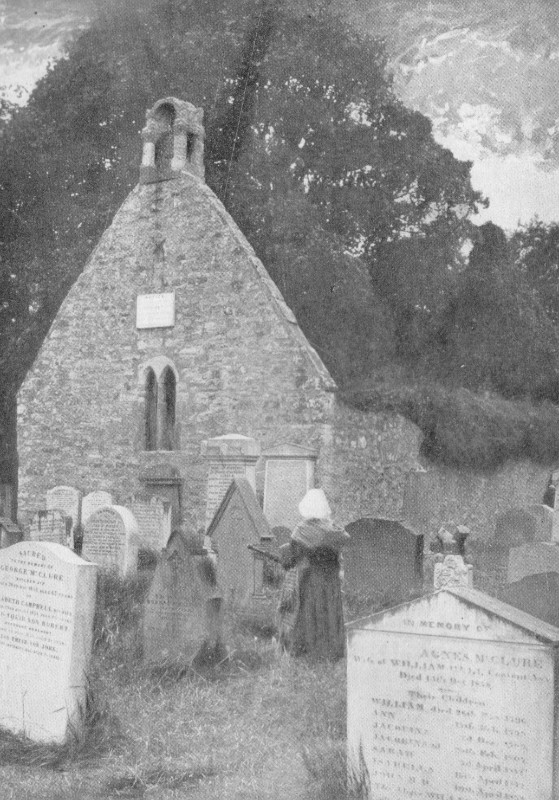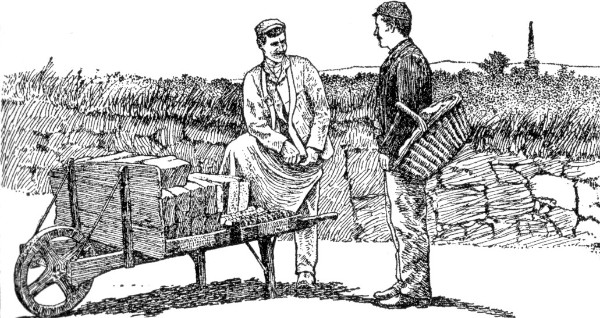 |
|
||
| Kellscraft
Studio Home Page |
Wallpaper
Images for your Computer |
Nekrassoff Informational Pages |
Web
Text-ures© Free Books on-line |
|
THE
LAND OF HEATHER
WRITTEN AND ILLUSTRATED BY CLIFTON JOHNSON  Published by THE MACMILLAN COMPANY New York MCMIV LONDON: MACMILLAN AND CO., LIMITED Copyright 1903, by The Macmillan Company  Tam o' Shanter's Kirk ACKNOWLEDGMENT is hereby made to The Outlook, The Interior, Good Housekeeping, The Congregationalist, The Pilgrim, The Era, The Household-Ledger, and The Springfield Republican, in which periodicals several of the chapters included in this volume were first published. Electrotyped Reprinted and December, 1903 Printed at the Norwood Press, Norwood, Mass, September, 1903
 A Chat on the Highway List of Illustrations Tam o' Shanter's Kirk A Chat on the Highway Setting up Blocks of Peat to Dry His Favorite Grandchild Threshold Gossip A Favorite Loitering Place On the Moorland A Schoolroom Corner in Drumtochty College Kathie scrubs the Front Walk "A Wall of Crockery" Village Bairns Logie Ruin Conducting her Coo to Pasture Guddling for Trout A Village Well Washing by the Burnside The Laddies playing "Links" in the Schoolyard Quoits — a Dispute Gypsies Spreading Blankets after the Wash A Servant Lassie Neighbors Women Workers An Upland Pasture Haymaking Feeding the Pet Lamb A Hayrake Carrying Peat out of the Bog Visiting By the Fireside A Meeting in the Lane "Puttin' oot the Dung" Entrance to a Close Edinburgh Melrose Abbey Queen Mary's Prison on an Isle of Lochleven Palaulays In the Tenements Spinning a "Peerie" The Window in Thrums House Returning from Market The Peat-stack in the Yard Stirring up the Fire "A Tattie Dooly" Ruins of a Cotter's Home Water from the Well A Mountain Stream Loch Katrine and Ben Venue A Coach to Lomond Highland Pipers Kilchurn Castle on Loch Awe Loch Lomond and Ben Lomond A Cottager piling Peat Churning A Kitchen Corner An Old Farmhouse A Fire on the Floor Skye Fishing-boats Feeding the Dog A Rider Resting on a Dyke A Highland Cow A Bird's-nest in the Hedge The School at Work "A Wee Brig ower a Burnie" A Garden Rose An Exchange of Snuff Sunday Afternoon Church in a Northern Glen Mess for the Pigs Birthplace of Robert Burns The Brig o' Doon "The Twa Brigs o' Ayr" A Stone-breaker The Postman Woodland Hyacinths The Wall of Severus A Castle of the Black Douglas  Setting up Blocks of Peat to Dry Introductory Note
HEATHER is not peculiarly Scotch. It grows on the moors and waste lands of all parts of Britain and is found in most sections of the continent of Europe. But in Scotland it is omnipresent to an unusual degree, and, besides, it has become so closely associated in literature, both of fact and of fiction, with this particular country as to have acquired many synonymous attributes. The flowers are of a lilac-rose color, but vary much in depth of tint, thus adding materially to the beauty of the wilds which they delight to inhabit. The heather is in its glory in late August and early September, and one who sees it then would be apt to forget that it had any other mission than to delight the eye; yet it is not without its utilitarian aspect as well. The domestic bees find their richest feast of the year in its blossoms; the plants contribute much to the formation of peat; the shrubby growth makes admirable cover for the game birds, and is often used for thatching cottages, or is tied to handles for brooms and in bunches for scrubbing brushes; and still other uses might be mentioned. Naturally one would expect the heather to be the Scotch national flower, and perhaps it might have been had not a chance incident conferred the distinction on the thistle. History says this choice was due to James III, who took the thistle to illustrate his royal motto, "In Defence"; but according to tradition the preference given the thistle dates back to the time when the Norsemen ravaged all the shores of northern Europe. On one occasion, in the dead of night, an invading Norse force approached unperceived the camp of the Scots who had gathered to oppose them. But while the Norsemen paused to ascertain the undefended points of the camp they proposed to assault, one of their spies stepped on a thistle, and the sudden pain brought forth a violent oath. This aroused the Scots, and they hastened to attack the invaders, gained a complete victory, and afterward adopted the plant which had been the means of delivery as their emblem. The thistle's thorny vigor perhaps very well expressed the Scotch character in those long-gone fighting days, but now the hardiness and warm bloom of the heather, to my mind, indicate more exactly the racial individuality. CLIFTON
JOHNSON.
|